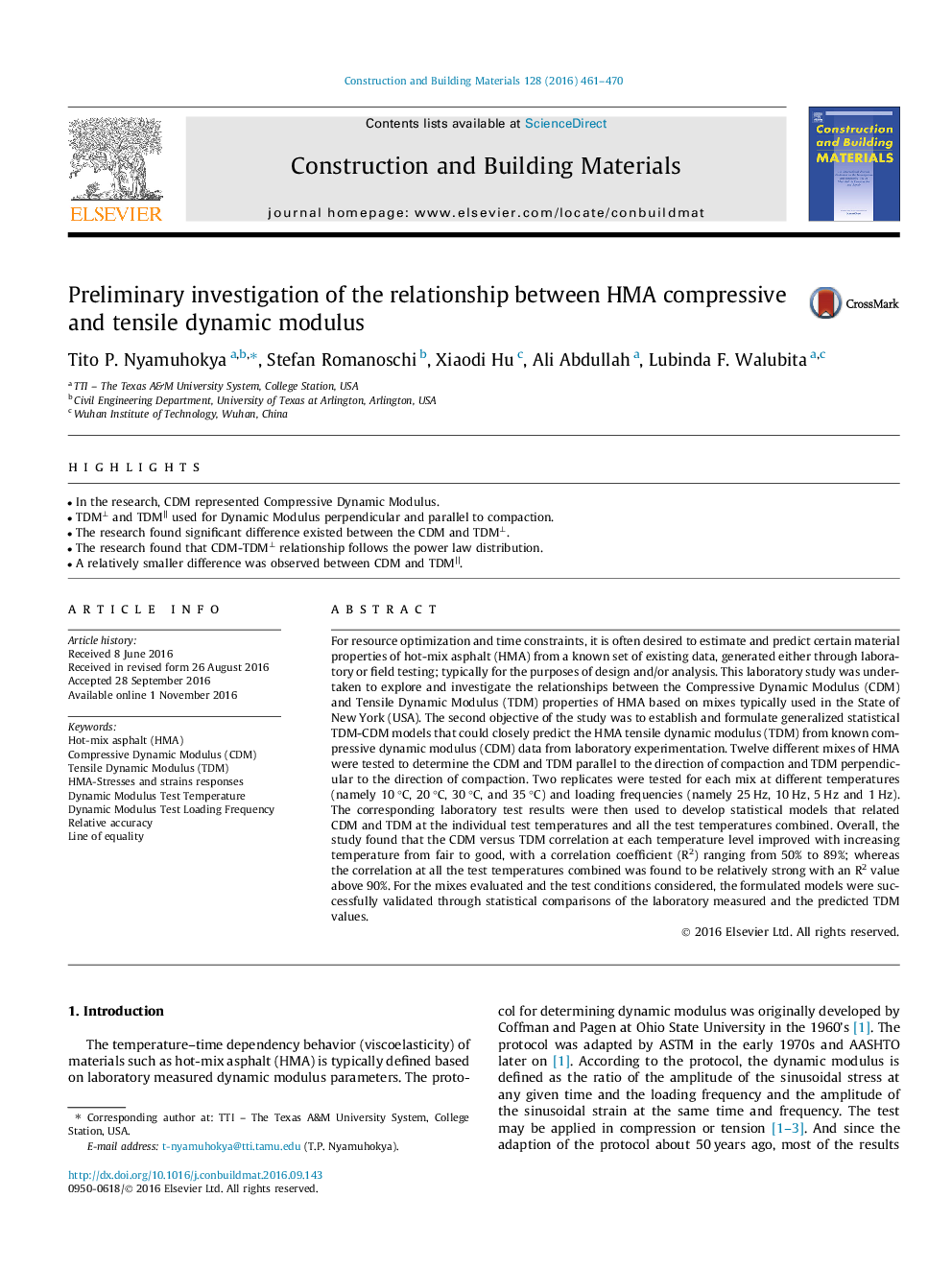| کد مقاله | کد نشریه | سال انتشار | مقاله انگلیسی | نسخه تمام متن |
|---|---|---|---|---|
| 4914057 | 1428778 | 2016 | 10 صفحه PDF | دانلود رایگان |
عنوان انگلیسی مقاله ISI
Preliminary investigation of the relationship between HMA compressive and tensile dynamic modulus
دانلود مقاله + سفارش ترجمه
دانلود مقاله ISI انگلیسی
رایگان برای ایرانیان
موضوعات مرتبط
مهندسی و علوم پایه
سایر رشته های مهندسی
مهندسی عمران و سازه
پیش نمایش صفحه اول مقاله

چکیده انگلیسی
For resource optimization and time constraints, it is often desired to estimate and predict certain material properties of hot-mix asphalt (HMA) from a known set of existing data, generated either through laboratory or field testing; typically for the purposes of design and/or analysis. This laboratory study was undertaken to explore and investigate the relationships between the Compressive Dynamic Modulus (CDM) and Tensile Dynamic Modulus (TDM) properties of HMA based on mixes typically used in the State of New York (USA). The second objective of the study was to establish and formulate generalized statistical TDM-CDM models that could closely predict the HMA tensile dynamic modulus (TDM) from known compressive dynamic modulus (CDM) data from laboratory experimentation. Twelve different mixes of HMA were tested to determine the CDM and TDM parallel to the direction of compaction and TDM perpendicular to the direction of compaction. Two replicates were tested for each mix at different temperatures (namely 10 °C, 20 °C, 30 °C, and 35 °C) and loading frequencies (namely 25 Hz, 10 Hz, 5 Hz and 1 Hz). The corresponding laboratory test results were then used to develop statistical models that related CDM and TDM at the individual test temperatures and all the test temperatures combined. Overall, the study found that the CDM versus TDM correlation at each temperature level improved with increasing temperature from fair to good, with a correlation coefficient (R2) ranging from 50% to 89%; whereas the correlation at all the test temperatures combined was found to be relatively strong with an R2 value above 90%. For the mixes evaluated and the test conditions considered, the formulated models were successfully validated through statistical comparisons of the laboratory measured and the predicted TDM values.
ناشر
Database: Elsevier - ScienceDirect (ساینس دایرکت)
Journal: Construction and Building Materials - Volume 128, 15 December 2016, Pages 461-470
Journal: Construction and Building Materials - Volume 128, 15 December 2016, Pages 461-470
نویسندگان
Tito P. Nyamuhokya, Stefan Romanoschi, Xiaodi Hu, Ali Abdullah, Lubinda F. Walubita,